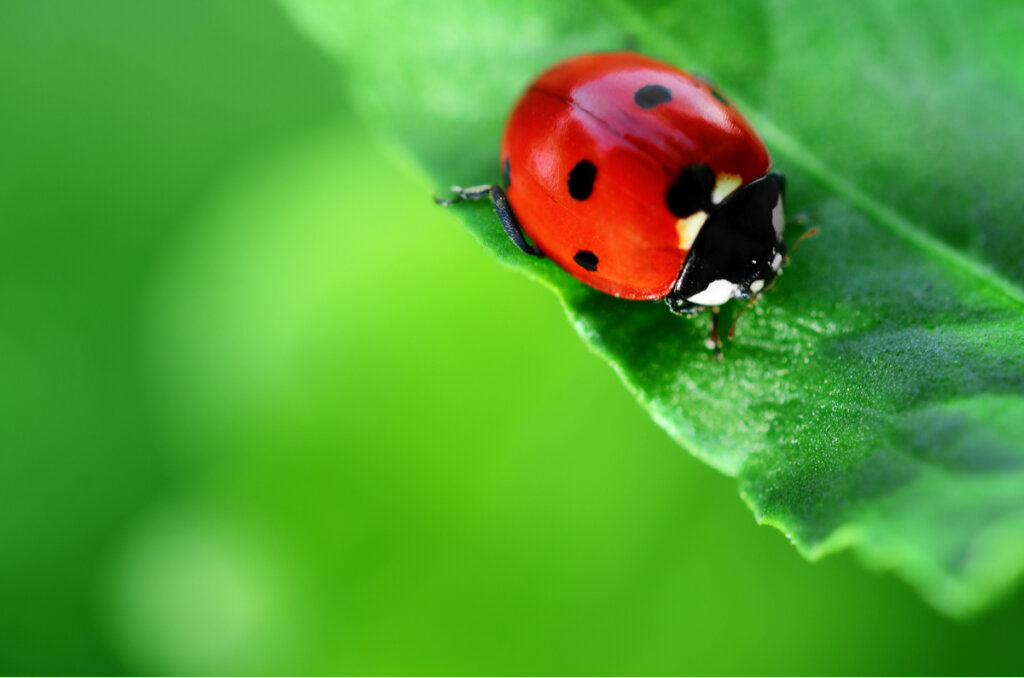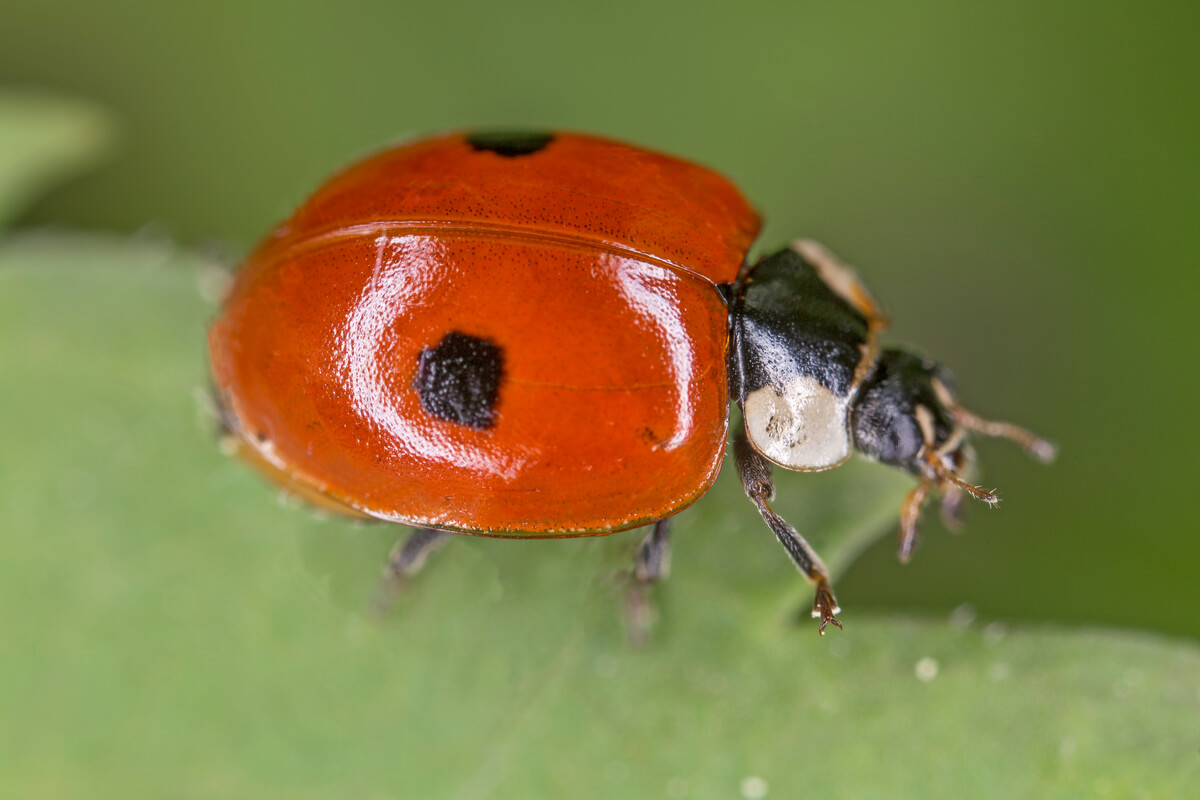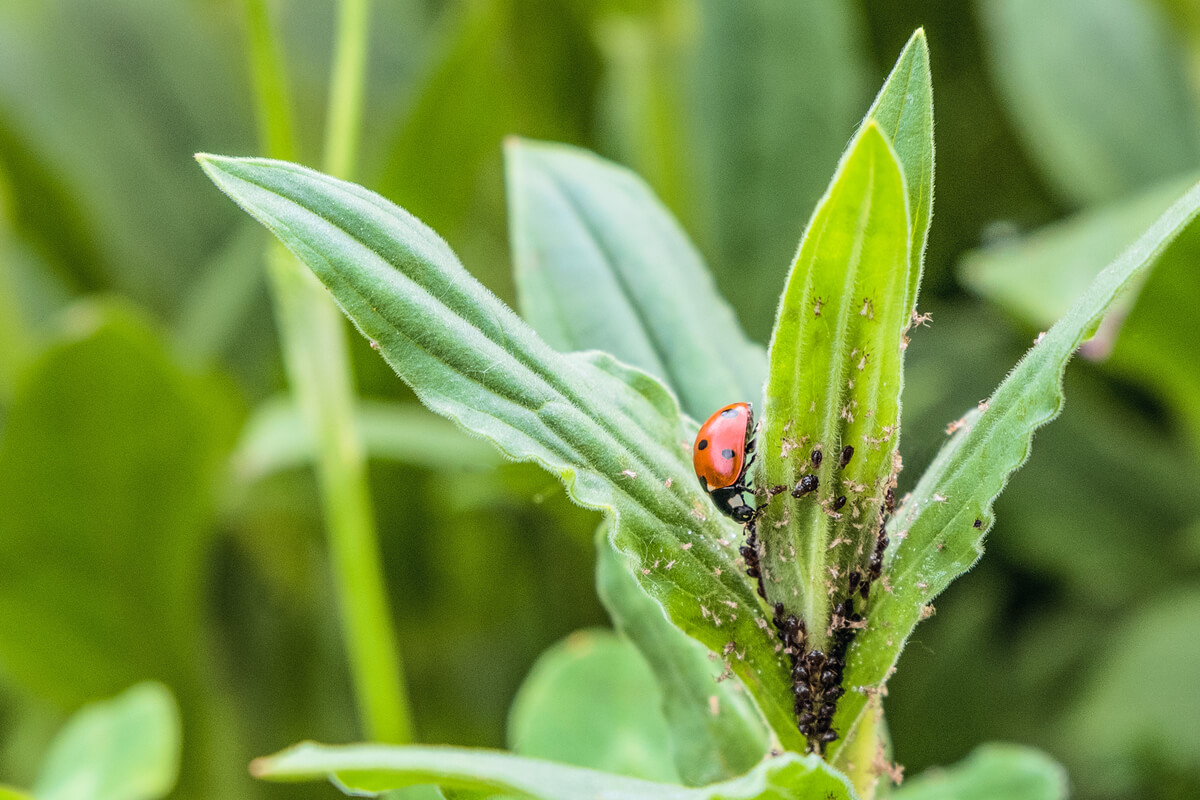Ladybugs and Pest Control

Ladybugs are a group of insects that attract us because of their colorful and curious shape. In addition, they can be excellent allies in the control of certain pests in the orchard. Find out all about ladybugs and pest control today!
Strange as it may seem, the presence of one insect can, in turn, cancel out the harmful actions of other species that can damage the agro-economic industry. If you want to know more, we encourage you to read on and find out all about ladybugs and pest control.
A large family of insects
Ladybugs are a common species in fields, orchards and gardens. This insect with diurnal habits can be found in all continents and latitudes except in the Arctic, where the freezing temperatures prevent its development (as with most insects).
Although all ladybugs may seem very similar to each other, you’d be surprised! It’s estimated that there are about 5,000 species of ladybugs within the family Coccinellidae!!
This family is in the Coleoptera order, the group of animals with the most known species, which includes beetles.
The ladybug has long been a popular insect among farmers. But why are they so important for pest control? The key seems to lie in their life cycle. In the following section, we’ll explain all.

The life cycle of the ladybug
Like most insects, ladybugs undergo metamorphosis during their life cycle.
In spring, females lay their eggs on the underside of plant leaves. These eggs are elongated and have a characteristic yellow color. After a short time, the larvae hatch, elongated and dark. Gradually, these larvae increase in size and change shape to become pupae.
This whole cycle, as usual, is influenced by the seasons: the hatching of the eggs takes place in spring and the transition to adulthood in early summer. In winter, the ladybugs seek shelter under fallen leaves or tree bark.
Finally, they become adults with their characteristic red color with spots, thus closing the cycle. This color serves as a defense against birds and other predators, giving them a poisonous appearance, even though they’re harmless.
This isn’t the only case where a harmless animal imitates another more dangerous than itself. In nature, adaptations to maximize survival come in countless forms.
Ladybugs and pest control
It’s in the larvae where we find this great ability to control pests. Adults usually lay their eggs near nests of aphids, mealybugs, and other insects harmful to the garden or orchard.
Ladybug larvae are voracious eaters of these insects, being able to eat a whopping 150 aphids a day.
Thus, these small ladybug juveniles can help prevent the proliferation of aphids, an insect that’s very harmful to plants, as it feeds on their leaves and stems. Since ancient times, farmers have considered the presence of ladybugs in their crops as beneficial.
The use of biological pest controllers, such as ladybugs, is booming. Unlike insecticides, they have no harmful effects on the environment and are a simple and effective method to ensure good growth of garden plants.
Also, by using these animals instead of insecticides, we help to protect insect biodiversity, as there would be no chemicals attacking other harmless species.
How can we attract ladybugs to the garden or orchard?
To make pest control more effective, we can follow a series of tips to attract ladybugs to the area of interest. Some of them are as follows:
- Buy ladybugs. Some specialty stores sell these insects to let them grow in the garden. In particular, the seven-spotted ladybug (Coccinella septempunctata) is very effective as an aphid eater.
- If we introduce this type of insect, it’s best to avoid using pesticides. These commonly used chemicals can be detrimental to the ladybug population. Also, it’s best to wait a while after the last time chemicals were applied in order to introduce these insects.
- Of course, one must learn to recognize the dark-colored, elongated ladybug larvae and not eliminate them.
While ladybugs are also good for protecting indoor plants, it’s difficult for them to establish colonies in the same way as outdoors.

Ultimately, ladybugs are an insect that we always should try to attract to our plants. While controlling harmful insect pests, their presence means we don’t have to use chemical pesticides that will pollute the environment.
All cited sources were thoroughly reviewed by our team to ensure their quality, reliability, currency, and validity. The bibliography of this article was considered reliable and of academic or scientific accuracy.
- https://www.agronewscastillayleon.com/mariquitas-un-insecticida-natural-contra-los-pulgones
- https://www.bbc.com/mundo/noticias/2014/04/140408_curiosidades_mariquitas_internet_en
- http://bioaccio.com/es/servicios/control-plagas-enfermedades-plantas/
- Carballo, M., & Guharay, F. (2004). Control biológico de plagas agrícolas. España: Edit. Managua.
